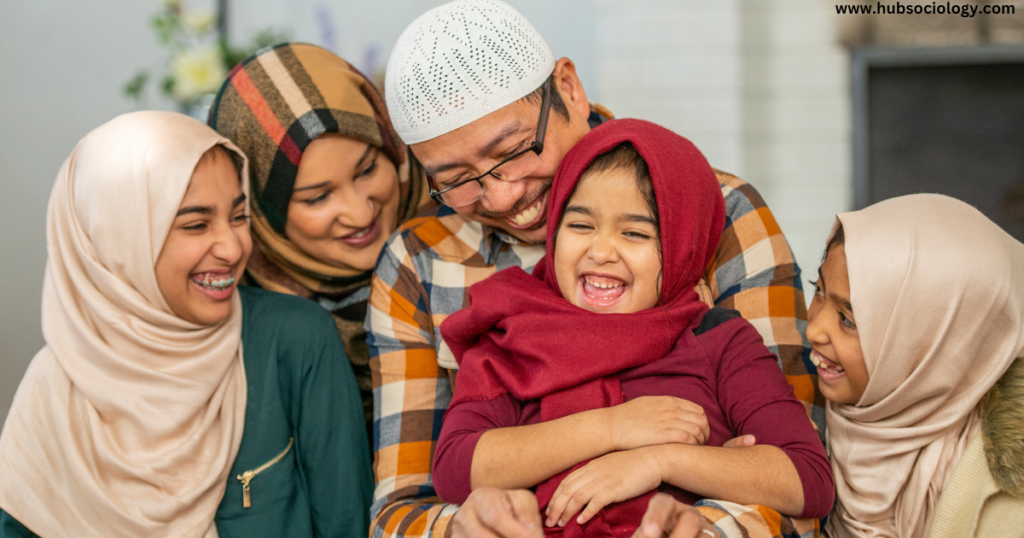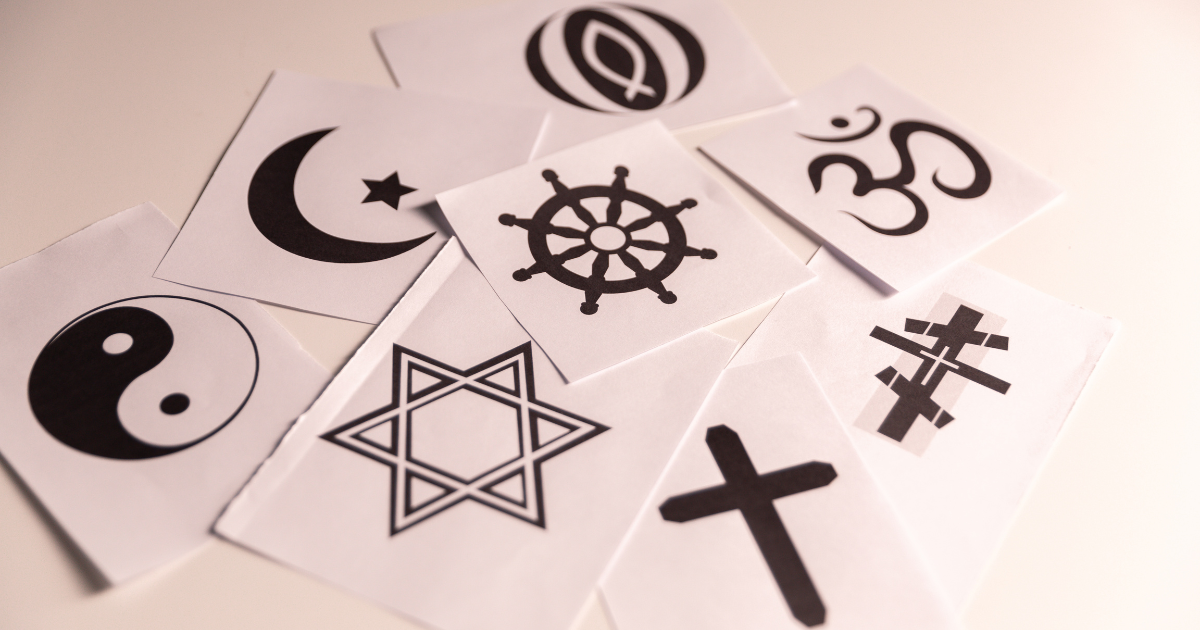Introduction on Religious Diversities in India
India is often described as a land of unparalleled religious diversity. It is the birthplace of major religions like Hinduism, Buddhism, Jainism, and Sikhism, while also being home to significant populations of Muslims, Christians, Jews, Parsis, and various indigenous faiths. This pluralistic religious landscape has shaped India’s social, cultural, and political fabric over centuries.
From a sociological perspective, religious diversity in India presents a complex interplay of coexistence, syncretism, conflict, and identity politics. This article explores the nature of religious diversities in India, its historical roots, sociological implications, and contemporary challenges.

Table of Contents
Historical Context of Religious Diversities in India
India’s religious diversity is deeply rooted in its history. Ancient India saw the rise of Hinduism, with its vast array of deities, scriptures, and philosophical traditions. Around the 6th century BCE, heterodox movements like Buddhism and Jainism emerged, challenging Vedic orthodoxy and promoting non-violence, asceticism, and egalitarianism.
The medieval period witnessed the arrival of Islam through trade and conquest, leading to the establishment of Muslim rule in parts of India. Sufi saints played a crucial role in fostering syncretic traditions, blending Islamic mysticism with local customs. Christianity arrived early in India, with St. Thomas believed to have reached Kerala in the 1st century CE. Later, European colonization brought different Christian denominations.
The Sikh faith emerged in the 15th century under Guru Nanak, emphasizing monotheism, social equality, and community service. Parsis (Zoroastrians) and Jews also found refuge in India, adding to its religious mosaic.
Thus, India’s religious landscape has been shaped by continuous interactions, adaptations, and sometimes conflicts among different faiths.
Sociological Dimensions of Religious Diversities in India
1. Pluralism and Syncretism
One of the most striking features of India’s religious diversity is syncretism—the blending of different religious traditions. This is evident in:
- Shared sacred spaces: Many shrines, like Ajmer Sharif (Sufi) or Haji Ali Dargah, are revered by people across religions.
- Festivals and rituals: Hindus and Muslims celebrate each other’s festivals (e.g., Diwali and Eid). Sufi-Bhakti traditions emphasize love and devotion beyond rigid religious boundaries.
- Folk traditions: Local deities and saints often transcend religious labels, worshipped by Hindus, Muslims, and tribals alike.
Sociologists like Peter Berger and Robert Bellah argue that such pluralism fosters a civil religion—a shared cultural ethos that binds diverse communities.
2. Caste and Religion
Religion in India is deeply intertwined with caste. While Hinduism’s caste system has been a major social divider, other religions also exhibit caste-like hierarchies:
- Dalit Christians and Muslims: Despite egalitarian religious doctrines, caste discrimination persists among Indian Christians and Muslims.
- Sikhism and Caste: Though Sikhism rejects caste, the Jat-Ravidassia divide remains significant.
- Buddhism and Social Reform: Ambedkar’s conversion to Buddhism was a radical rejection of caste oppression.
This intersection of caste and religion complicates the idea of a purely faith-based identity.

3. Communalism and Identity Politics
Despite historical syncretism, India has also witnessed communal tensions—conflicts between religious groups, often politicized. Key sociological explanations include:
- Colonial Divide-and-Rule Policies: British census classifications hardened religious identities, leading to Hindu-Muslim polarization.
- Partition Trauma: The 1947 Partition along religious lines left deep scars, reinforcing mistrust.
- Modern Electoral Politics: Political parties often mobilize voters along religious lines, exacerbating divisions.
Scholars like Paul Brass argue that communal violence is not spontaneous but constructed through political and media narratives.
4. Secularism and the Indian Model
India’s Constitution enshrines secularism, but its interpretation differs from Western secularism. The Indian model:
- Recognizes all religions (Sarva Dharma Sambhava) rather than separating religion from state.
- Allows state intervention in religious affairs (e.g., banning triple talaq, regulating temple funds).
- Faces criticism for majoritarian biases (e.g., debates over Uniform Civil Code, cow protection laws).
Sociologist T.N. Madan critiques secularism as a Western import ill-suited for India’s religio-cultural ethos, while Rajeev Bhargava defends India’s contextual secularism.
5. Globalization and Religious Revivalism
Globalization has influenced India’s religious landscape in contradictory ways:
- Revivalist Movements: Hindu nationalism (Hindutva), Islamic reformism (Salafism), and Sikh revivalism assert purist identities.
- Transnational Religious Networks: Diaspora communities (e.g., NRIs) fund temples, mosques, and religious movements in India.
- Interfaith Dialogues: Globalization also fosters interreligious initiatives for peace and harmony.
Contemporary Challenges and Conflicts on Religious Diversities in India
1. Rising Majoritarianism and Minoritization
The rise of Hindutva politics has led to concerns about the marginalization of Muslims, Christians, and other minorities. Issues like:
- Anti-conversion laws (accusing Christians of forced conversions).
- Cow vigilantism (lynching of Muslims over beef rumors).
- Citizenship debates (CAA-NRC protests) reflect deepening religious divides.
2. Urbanization and Religious Ghettoization
Urban areas witness both interreligious mingling and ghettoization. While cosmopolitan cities see interfaith marriages and secular lifestyles, riots and discrimination lead to religious enclaves (e.g., Muslim-dominated areas in Mumbai).
3. Gender and Religious Patriarchy
Religious institutions often reinforce patriarchal norms:
- Triple Talaq debate highlighted Muslim women’s rights.
- Sabarimala issue questioned Hindu traditions barring menstruating women.
- Christian personal laws discriminate against women in inheritance.
Feminist scholars like Flavia Agnes critique religion-based personal laws for perpetuating gender inequality.
4. Terrorism and Islamophobia
Global Islamophobia and incidents like the 2002 Gujarat riots, Mumbai attacks, and ISIS recruitment have stigmatized Indian Muslims. Media stereotypes exacerbate fear and polarization.
5. Interfaith Marriages and “Love Jihad” Controversy
Interreligious marriages, often termed “Love Jihad”, have become politicized, with laws restricting interfaith unions in some states. This reflects anxieties about religious identity and demography.
Conclusion on Religious Diversities in India

India’s religious diversity is both a strength and a challenge. While history shows remarkable syncretism, modern politics often weaponizes religious identities. Sociologically, the way forward includes:
- Promoting Interfaith Dialogue: Grassroots movements fostering mutual respect.
- Reforming Religion-Based Laws: Ensuring gender justice and equality.
- Strengthening Secular Education: Reducing communal biases in curricula.
- Political Accountability: Curbing hate speech and divisive electoral strategies.
- Encouraging Civic Nationalism: Emphasizing shared Indian identity over religious divides.
As Amartya Sen argues, India’s pluralism is its greatest democratic asset. The challenge lies in balancing religious freedoms with social harmony, ensuring that diversity remains a source of unity rather than division.
Topic Related Questions on Religious Diversities in India
5-Mark Questions on Religious Diversities in India (Short Answers)
- Define religious diversity in the Indian context.
- What is syncretism? Give two examples from India.
- How did colonialism impact religious identities in India?
- What is the significance of Sufi-Bhakti traditions in promoting religious harmony?
- Explain the concept of ‘civil religion’ in India.
- What role does caste play in Indian Christianity and Islam?
- How does Hindutva politics influence religious diversity in India?
- What is the Indian model of secularism? How is it different from Western secularism?
- Briefly discuss the impact of globalization on religious revivalism in India.
- Why is the issue of interfaith marriages controversial in India today?
10-Mark Questions on Religious Diversities in India (Detailed Answers)
- Discuss the historical evolution of religious diversity in India.
- Explain the sociological concept of ‘communalism’ with reference to India.
- How does caste intersect with religion in Indian society? Provide examples.
- Critically analyze the role of the state in managing religious diversity in India.
- Discuss the impact of urbanization on religious identities in India.
- Examine the relationship between gender and religious patriarchy in India.
- How has globalization influenced religious movements in India?
- What are the causes and consequences of religious ghettoization in Indian cities?
- Analyze the role of media in shaping perceptions of religious minorities in India.
- Discuss the challenges faced by India’s secular framework in contemporary times.
15-Mark Questions on Religious Diversities in India (Essay-Type Answers)
- “India’s religious diversity is both a strength and a challenge.” Discuss this statement sociologically.
- Critically examine the impact of Hindutva politics on India’s religious minorities.
- How do syncretic traditions in India promote interfaith harmony? Explain with examples.
- “Caste and religion are deeply intertwined in India.” Analyze this statement with sociological perspectives.
- Discuss the role of the Indian state in maintaining religious pluralism. Has it succeeded or failed?
- Examine the factors contributing to communal violence in India. Suggest measures to prevent it.
- How has globalization affected religious identities in India? Discuss both positive and negative impacts.
- “Secularism in India is a contested concept.” Critically evaluate this statement.
- Discuss the changing nature of religious identities in urban India.
- “Religious diversity in India is under threat due to rising majoritarianism.” Do you agree? Justify your answer.

1 thought on “Religious Diversities in India: A Sociological Perspective”